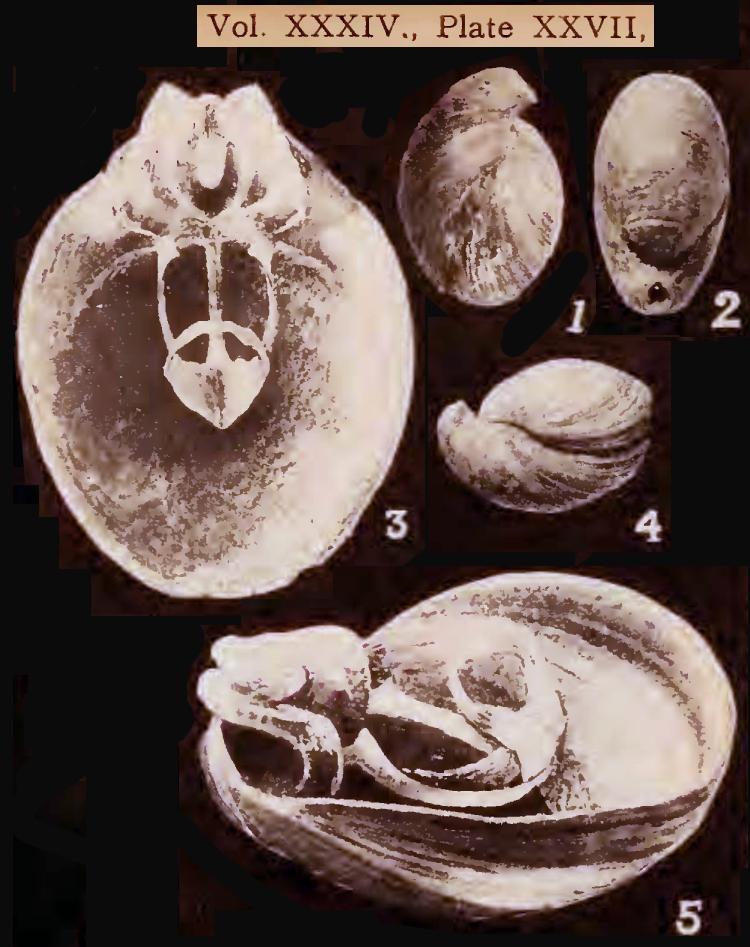 |
|
|||
|
Genus Pirothyris Thomson, 1927, p. 280 |
[Type species= Magasella vercoi Blochmann, 1910 (p. 91)] |
Small, smooth, elongate oval, strongly biconvex, rectimarginate to slightly parasulcate, beak suberect, symphytium present. Cardinalia thickened, inner socket ridges massive; cardinal process with ovate myophore and prominent anterior boss occupying about half of hinge trough, crura short; loop haptoid. |
Present Diagnosis from volume 5 of the Treatise on Invertebrate Paleontology (2006) |
| Extant Species of Pirothyris |
|
|
Diagnosis |
|
|
|
Pirothyris vercoi Blochmann, 1910 Type locality: Backstairs Passage, near Adelaide, South Australia Magasella vercoi Blochmann, 1910 Diagnosis (Blochmann, 1910) Shell small, in outline of a slender pear shape, higher than wide, remarkably thickwalled, light to dark dull coral-red, with a conspicuous finger-shaped hinge process. The greatest width is somewhat in front of the centre. Beak stout, rather strongly bent dorsalwards, and then obliquely truncate, with a moderately large hole. Its sides are rounded, and towards the deltidial plate are finished off in a sharp edge. Deltidial plates large, joining together widely. Lateral edge of the ventral valve in the neighbourhood of the teeth raised dorsally in a low point, further forwards curving ventrally. Front edge distinctly convex dorsally. |

